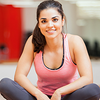When it comes to building a stronger, rounder booty, squats are non-negotiable. They target your glutes, quads, and hamstrings all at once, making them one of the most effective lower-body moves out there.
But here’s the catch: doing more squats isn’t always the answer. To truly see results, it’s all about how you train.
Adding tools like Booty Bands can take your squat game to the next level by increasing resistance, improving form, and activating more muscle fibers with every rep.
In this guide, we’ll cover how many squats you should do a day based on your fitness goals and how to make each squat count.
The Advantages of Squats You Shouldn’t Skip
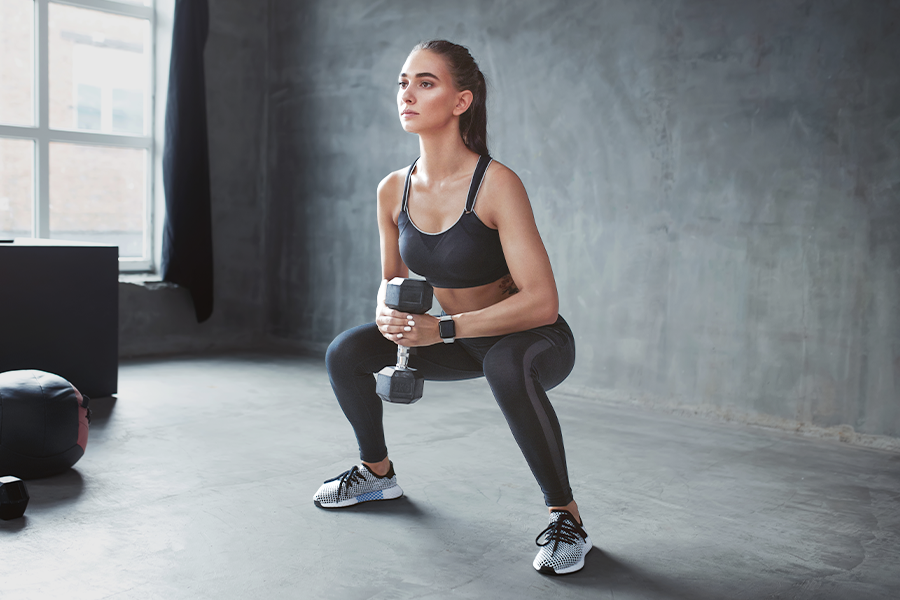
Squats do far more than just work your legs, they benefit your entire body. From better balance to stronger muscles, here’s why squats deserve a permanent place in your routine. Let's dive into the top benefits you might not expect.
1. Improve Balance and Coordination
Squats activate multiple muscle groups at once, training your body to move in sync. This boosts balance and coordination as your brain and muscles learn to communicate more efficiently during each rep.
2. Build Lean Muscle
Few exercises recruit as many major muscle groups as squats. By engaging your glutes, quads, and hamstrings, they help you gain size and strength faster. If you're looking to build lean muscle mass, squats should be a staple in your training plan.
3. Support Joint Mobility
Each squat takes your hips, knees, and ankles through a full range of motion, which helps improve flexibility and joint health over time. Incorporating squats can help reduce stiffness and discomfort in the joints, making your body more resilient during everyday movements.
4. Enhance Posture
Squats help strengthen the muscles responsible for supporting your body’s alignment. By targeting the glutes, quads, hamstrings, and calves, squats contribute to better posture and improved stability in everyday movement.
5. Improve Bone Health
When you perform squats, you place healthy stress on your bones, which helps improve bone density, especially in the hips, legs, and lower spine. Over time, this can reduce the risk of bone-related issues as you age.
6. Support Fat Loss
Squats are a full-body movement that raises your heart rate and engages large muscle groups, which helps burn calories. Plus, as you build more lean muscle, your body naturally burns more calories at rest, supporting long-term fat loss.
How Many Squats Should You Do for a Peach Booty?
There’s no one-size-fits-all answer. The number of squats you should do depends on your fitness level and your goals. Here’s how to tailor your squat routine for better glute gains:
- Beginners: Start with 2–3 sets of 10–15 reps using just your body weight. Focus on mastering form first. As your strength builds, gradually increase reps and resistance.
- Intermediate level: To build muscle and size, increase volume and load. Aim for 4–6 sets of 6–12 reps with added resistance like dumbbells or resistance bands.
- General fitness & booty gains: Target 3–4 sets of 15–20 reps using moderate resistance to build endurance and glute definition.
The key is progression. You need to challenge your muscles consistently to create change. But just doing more squats isn’t enough, focus on these three core areas to get the most out of your routine:
1. Monitor Your Frequency
Squatting every day can lead to overtraining and slower recovery. For optimal results, aim to squat 2–3 times a week, allowing enough rest between sessions for your muscles to grow and rebuild.
2. Mix Up Your Variations
Doing the same type of squat over and over can lead to plateaus. Change up your squat variations and try sumo squats, goblet squats, or banded squats. Adjust the sets, reps, or weights to keep your body adapting.
3. Adjust the Intensity
Both undertraining and overtraining can stall your progress. If you're breezing through your reps, it’s time to add resistance. If you’re struggling to finish a set, scale it back. Find the intensity that challenges you without compromising form or safety.
Types of Squats
There are many different types of squats you can incorporate into your workouts. The right variation depends on your fitness level, mobility, and training goals. Here's a breakdown of one of the most effective foundational movements:
1. Basic Squat
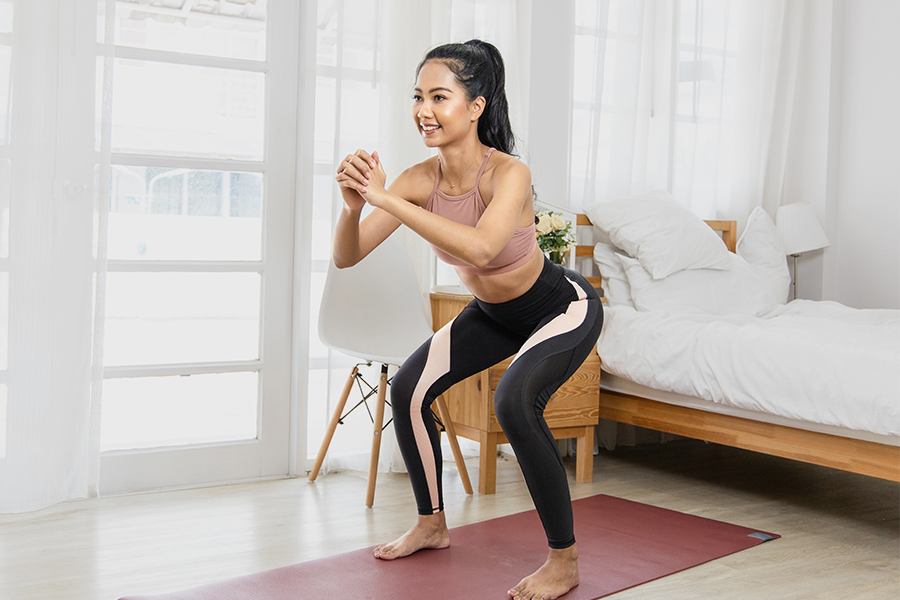
The basic squat is a great starting point. It targets major lower-body muscles like the glutes, quads, and hamstrings. This variation helps improve leg strength, muscular endurance, and joint mobility across the hips, knees, and ankles.
How to Do It:
- Stand with your feet shoulder-width apart and toes pointing forward.
- Bend your knees and push your hips back as if sitting in a chair.
- Keep your back straight and chest lifted throughout the movement.
- Engage your core to maintain proper alignment.
- Lower until your thighs are parallel to the ground.
- Push through your heels to return to the starting position.
- Perform 3 sets of 10–15 reps.
2. Goblet Squat
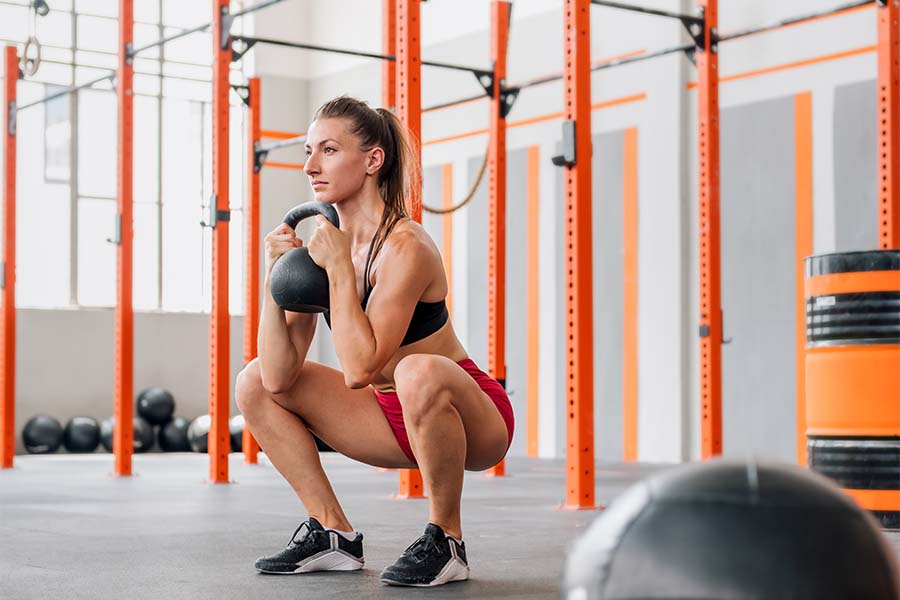
The goblet squat is a squat variation performed while holding a weight close to your chest. It’s an effective lower-body movement that targets the glutes, quads, and hamstrings. Holding a kettlebell or dumbbell also engages the core, helping improve strength and stability.
How to Do It:
- Start with feet shoulder-width apart and toes pointing slightly outward.
- Hold a kettlebell or dumbbell against your chest.
- Lower yourself slowly into a squat while keeping the weight stable.
- Pause briefly at the bottom of the movement.
- Push through your heels to return to the starting position.
- Repeat for your desired number of reps.
3. Wall Squat
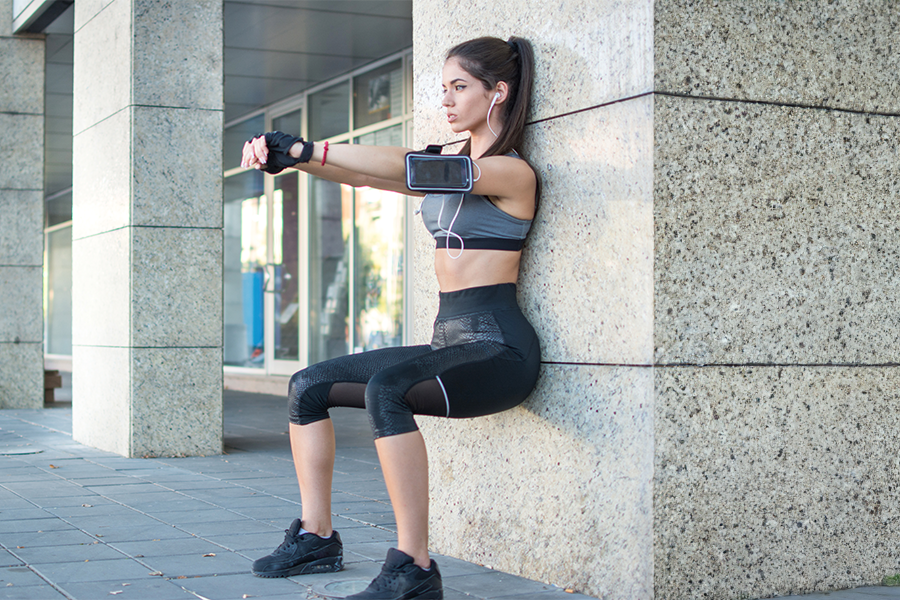
If you're looking to tone your legs and glutes with minimal equipment, wall squats are a simple yet effective addition to your routine. This static hold targets the quadriceps and glutes, helping to build strength and definition in the thighs and buttocks. It's also great for improving endurance and stability.
How to Do It:
- Stand with your back flat against a wall and feet hip-width apart.
- Slowly slide down the wall until your thighs are parallel to the ground.
- Keep your knees bent at a 90-degree angle, directly above your ankles.
- Engage your core and hold the position for 20–60 seconds, then return to standing.
To make this move more challenging and activate your glutes even further, try performing it with the DMoose Hip Circle Bands around your thighs.
4. Kang Squat
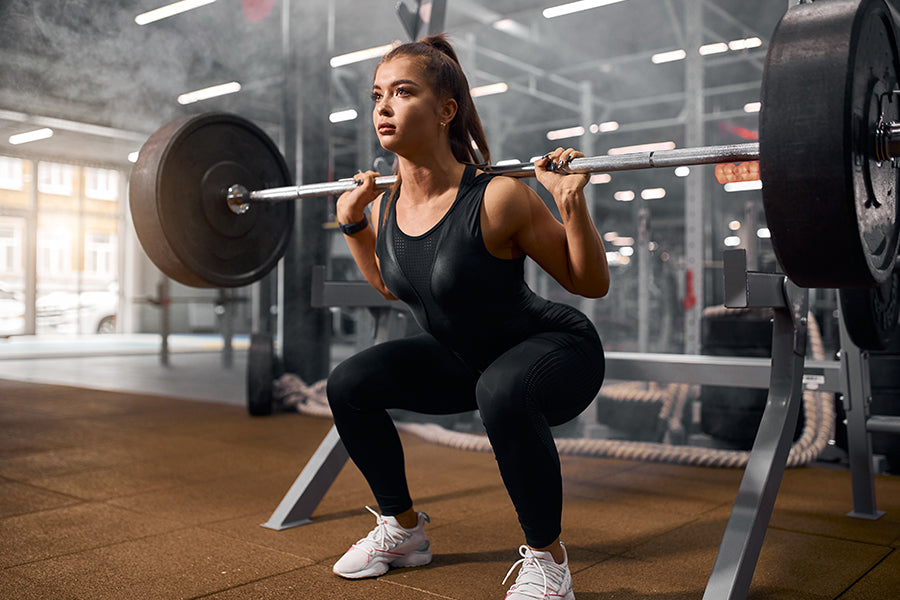
The Kang squat, often referred to as the kangaroo squat, is a powerful compound movement that combines a good morning with a traditional squat. This dynamic exercise targets multiple muscle groups, including the glutes, hamstrings, and lower back, making it ideal for developing both strength and explosiveness. It also elevates your heart rate, offering cardiovascular benefits alongside muscular activation.
How to Do It:
- Stand with your feet shoulder-width apart.
- Position a powerlifting barbell securely across your upper back.
- Hinge at the hips to perform a good morning movement, keeping your back flat and chest up.
- From that position, bend your knees and lower into a squat.
- Return to the good morning position by extending your knees and hips, then stand upright.
5. Pistol Squat
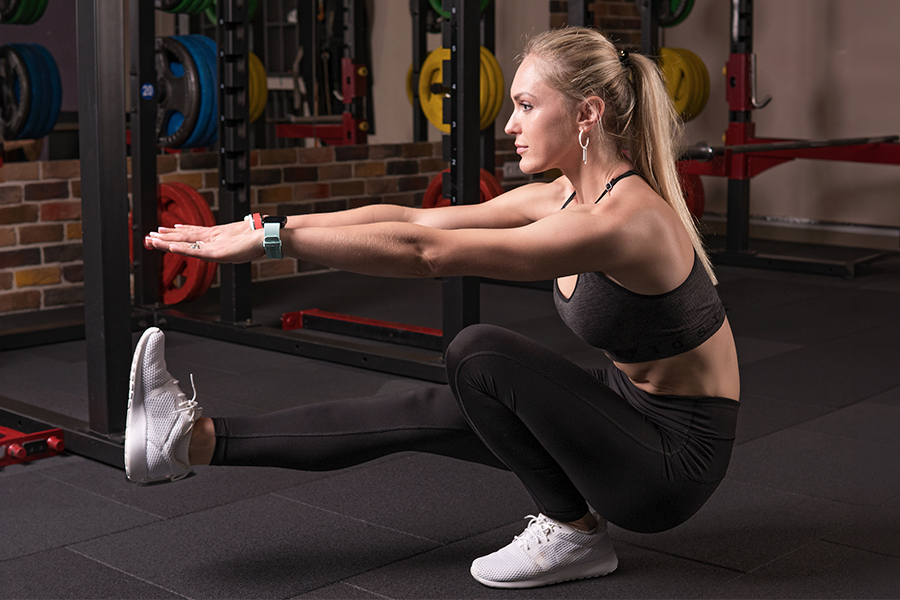
The pistol squat is an advanced single-leg exercise that challenges strength, balance, and control all at once. It primarily targets the quadriceps, hamstrings, and glutes while also improving core stability. This movement also enhances hip and knee mobility, making it a powerful tool for boosting functional movement and athletic performance.
How to Do It:
- Stand tall with your feet shoulder-width apart.
- Lift one foot off the ground and extend it straight in front of you.
- Lower into a squat on your standing leg, keeping your core engaged and spine neutral.
- Go as low as your mobility allows while maintaining balance.
- Push through your heel to return to standing.
- Switch legs and repeat.
6. Side-Kick Squat
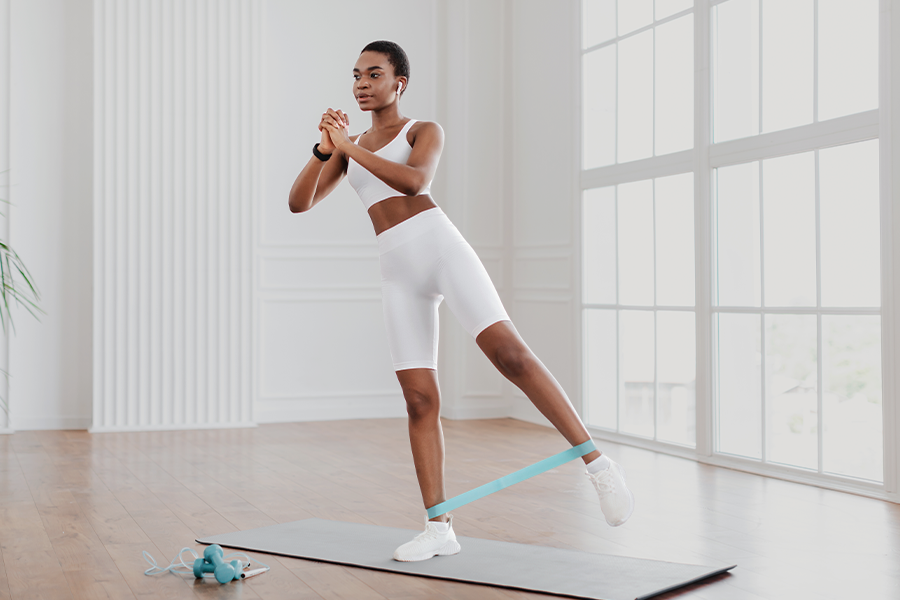
The side-kick squat is a dynamic variation of the traditional squat that targets the glutes, inner thighs, and outer thighs. The added kick motion engages the hip flexors, enhances mobility, and increases your range of motion. It’s a great functional exercise to include in your squat routine and can easily be adjusted for any fitness level.
How to Do It:
- Stand with your feet shoulder-width apart.
- Bend your knees and push your hips back to lower into a squat.
- As you return to standing, lift your left leg out to the side in a controlled kick.
- Bring your leg back down and go into your next squat.
- Repeat the kick on the right leg in the next rep.
7. Squat Jacks
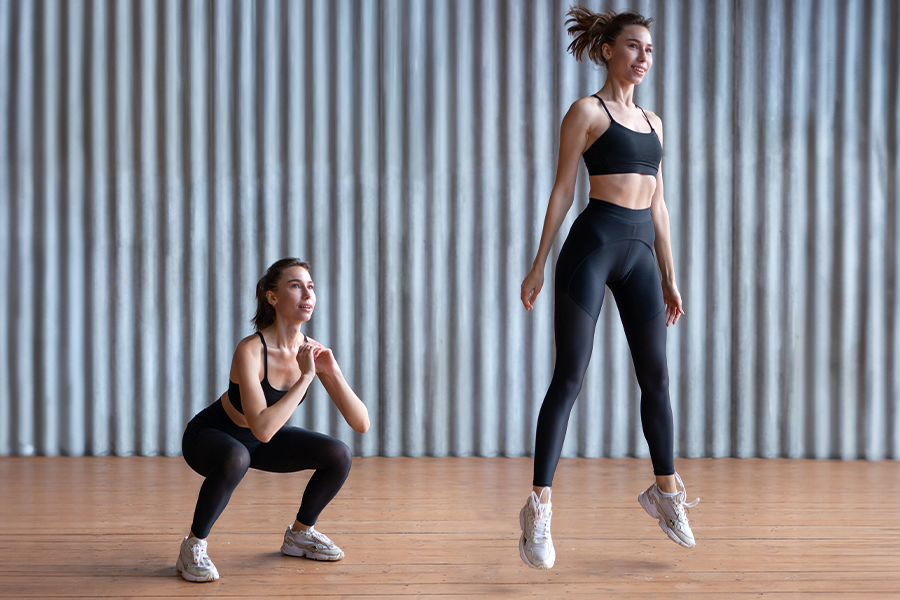
Squat jacks combine the explosive movement of jumping jacks with the strength-building benefits of squats. This high-energy exercise works your glutes, quads, and hamstrings while giving your cardiovascular system a serious boost. It’s a great way to add intensity to your squat routine and keep things exciting.
How to Do It:
- Stand with your feet together and arms at your sides.
- Jump your feet out into a squat position while lowering into a squat.
- At the same time, raise your arms overhead as if performing a jumping jack.
- Jump your feet back together and lower your arms to return to the starting position.
- Repeat for the desired number of reps at a controlled pace.
8. Wide Stance Squat

The wide stance squat involves placing your feet farther apart than a standard squat, creating a greater emphasis on the inner thighs while still targeting the glutes and quads. This variation improves hip mobility, strengthens the lower body, and enhances overall stability. It’s an excellent addition to any squat routine, especially if you want to diversify your lower-body training.
How to Do It:
- Stand with your feet wider than shoulder-width apart.
- Turn your toes slightly outward for better alignment.
- Lower your hips back and down into a squat position.
- Keep your knees in line with your toes throughout the movement.
- Push through your heels to return to standing.
FAQs
1. How many squats should I do a day to see results?
It depends on your fitness goals. For strength or muscle growth, aim for 3–5 sets of 6–10 reps with added resistance. For endurance, 2–3 sets of 15–20 reps work well. To maintain general health and mobility, 1–2 sets of 20–30 bodyweight reps are a good starting point.
2. Will doing squats every day make my bum bigger?
Squats can help shape and build your glutes, but growth requires a combination of proper form, resistance, recovery, and consistency. Doing squats every day may lead to fatigue or plateau—aim for 2–3 focused sessions per week for best results.
3. How long do you have to do squats to get a booty?
Results vary based on genetics, diet, and consistency, but noticeable changes in shape and tone typically begin within 4–8 weeks of regular squat training, especially when combined with proper nutrition and progressive overload.
4. Do squats increase hip size?
Squats primarily target the glutes, quads, and hamstrings. As your glute muscles grow, they can make your hips appear fuller and rounder. However, if you lack muscle mass in that area, growth will take time and require progressive training.
5. Can squats help reduce thigh fat?
Squats build muscle in your legs and glutes, but they don't directly burn fat in specific areas. For fat loss, combine squats with full-body strength training, cardio, and a healthy diet to reduce overall body fat and reveal toned legs.
6. Is it better to do squats with or without weights?
Both have benefits. Bodyweight squats improve endurance and form, while weighted squats build strength and muscle more effectively. Beginners should start without weights, then gradually increase resistance as they progress.
Final Thoughts
Squats are more than just a lower-body exercise, they’re a powerful tool for building strength, improving mobility, and shaping your glutes. Whether you're aiming for muscle growth, fat loss, or overall fitness, the key is consistency, proper form, and finding the squat variations that suit your goals.
By combining technique with smart training strategies, and even adding tools like resistance bands or weights, you can make every squat count. So, set your goals, pick your reps, and start building that peach booty, one squat at a time.
Reading List
4 Best Exercises for Leg Gains Other Than Squatting
Best Butt Exercises to Try in 2023
Fire Up Your Glutes With These 9 Quad Exercises
12 Best Workouts With Ankle Straps: Booty Cable Exercises
Strong Glutes – 8 Week Booty Burner Workout
Best Cardio Workouts for Legs and Thighs - 8 Options for a Great Butt and Thighs












